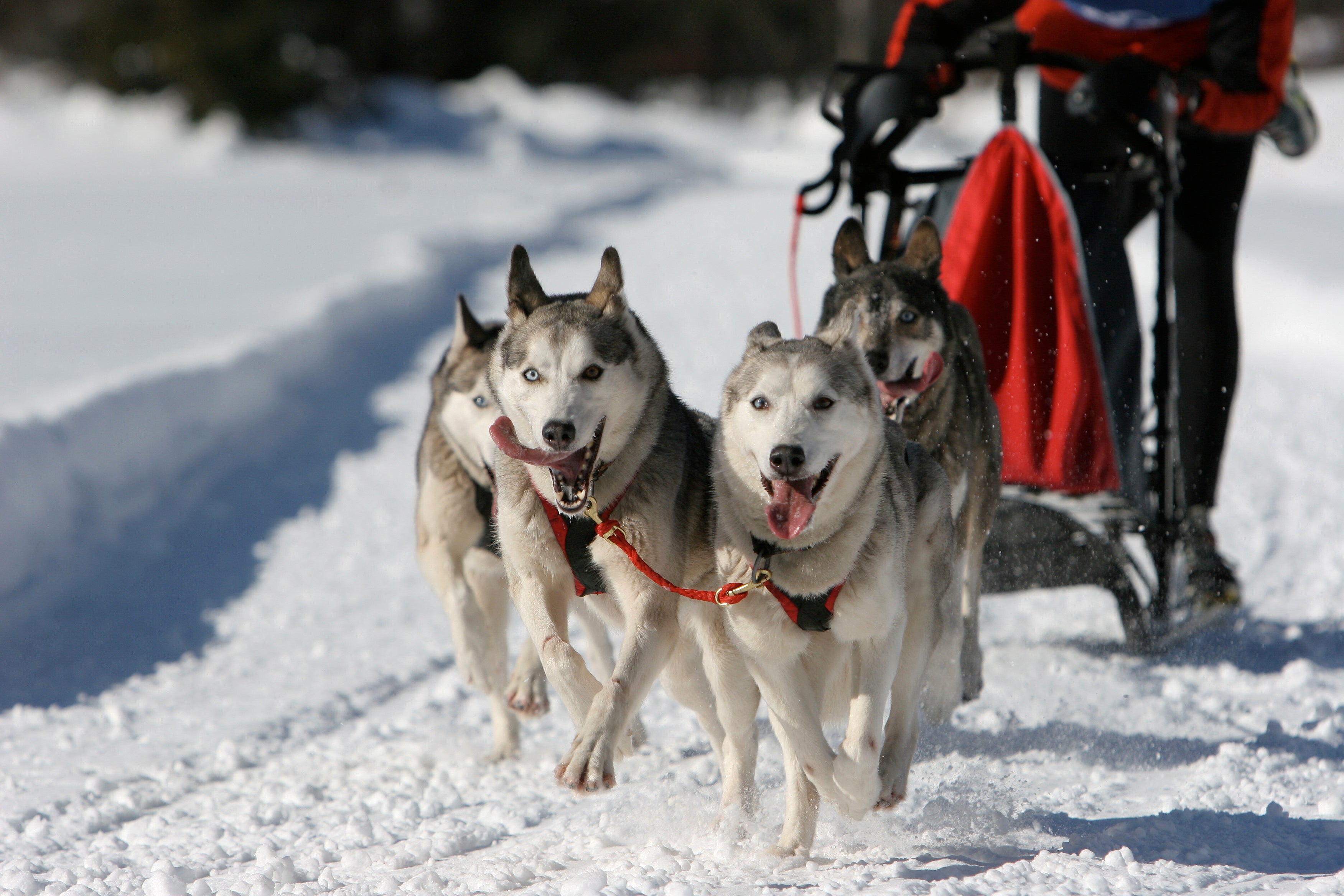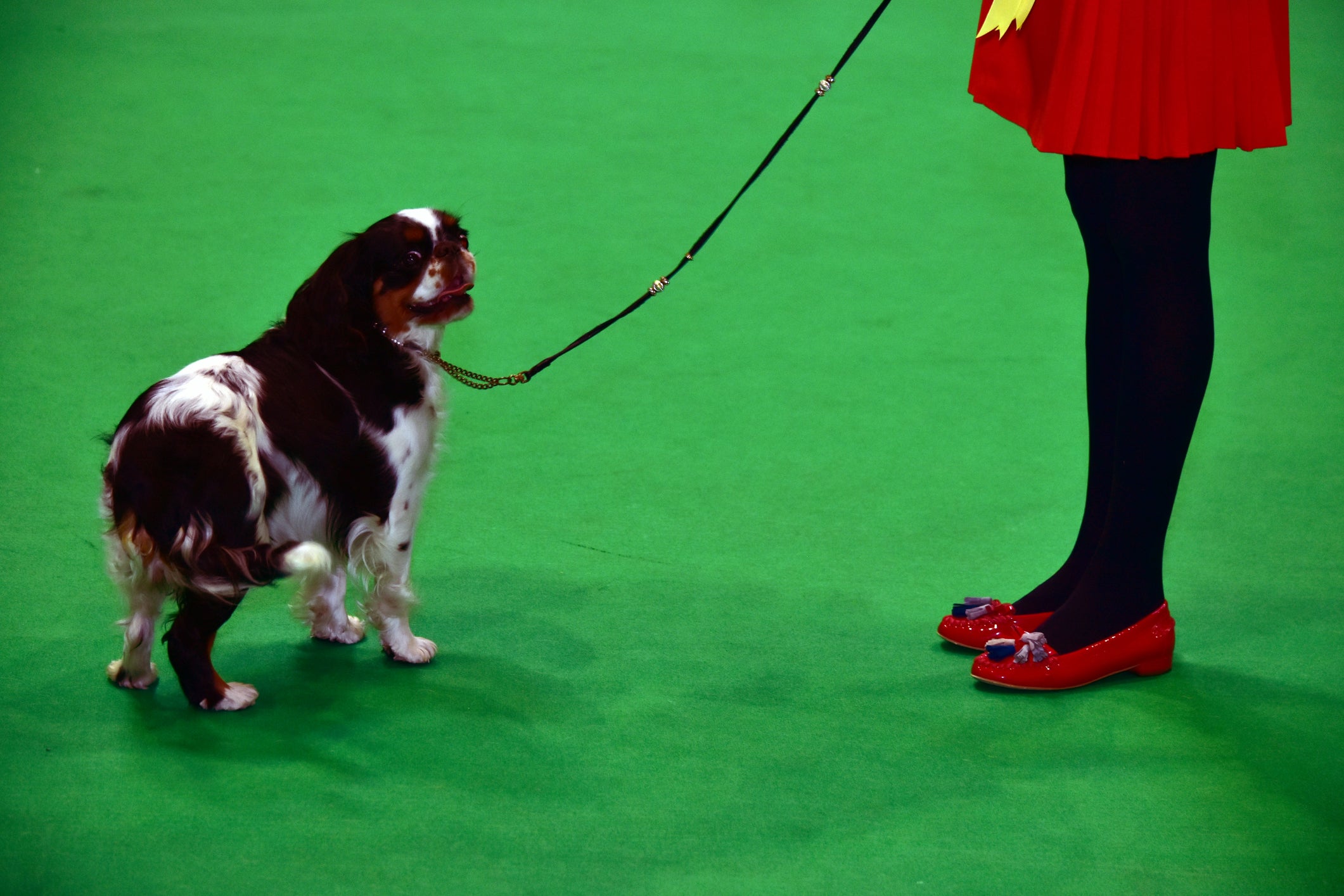How did we fall in love with wolves?
The process of how domesticated animals, such as dogs, came into our lives – and the bond we have with them – has been the subject of plenty of research, writes Sean T Smith


We tend to think of domestication as something we do to animals. But it’s far more likely that wolves domesticated themselves. What’s more, the theory of how wolves transitioned into dogs 15,000 years ago could also illuminate how our own species underwent a similarly dramatic self-domestication process around 40,000 years earlier.
Robert J Losey, a professor of anthropology specialising in the archaeology of human-animal relationships at the University of Alberta in Canada, explains that self–domestication occurs whenever the friendliest members of a species gain an evolutionary advantage. It is believed to alter the temperament of a wild species so rapidly because animals who are less likely to react to adversity with aggression dramatically increase their chances of reproductive success.
According to Prof Losey, the ancestors of modern dogs had their origins in east Asia before spreading out into Eurasia where there was probably more intermixing with wolves in the near east. “It’s likely that intermixture gives rise to the earliest dogs in Europe at some point between 15,000 and 20,000 years ago,” he tells me.
The timing is very significant. The late Pleistocene era is likely to have been the one when our ancestors were gradually transitioning away from a nomadic lifestyle and starting to settle in longer-term encampments.
Prof Losey explains how self-domestication may have played out, as wolves began congregating around campsites to scavenge on bones and vegetable scraps.
“Some subset of wolves began to forage in and around human living areas, feeding off our leftovers. Those groups of wolves become distinct from their truly wild counterparts and so they began to drift away from wild population. It’s likely that this environment selected for dogs that are friendlier and more stress tolerant and less likely to flee,” he says.

Prof Losey believes that wild canines transitioned into domesticated dogs capable of forming deep emotional bonds with humans very quickly. It’s likely that they were valued as protectors, guard dogs, transporters and – crucially – as hunting companions. “Those social bonds are evident archaeologically,” he says. “The best evidence for this is dog burial sites, which show up around 14,000 years ago and then become increasingly widespread from that point forward.”
The discovery of the “Bonn-Oberkassel dog” in Germany in 1914 is suggestive of such. The remains found at the site include a dog, a man and woman, alongside a number of decorated objects. DNA analysis indicated that it was an ancestor of modern dogs. Dog burial sites are ubiquitous in the archaeological record, with similar discoveries from roughly the same period in Ukraine, Iraq and eastern Siberia.
The positioning of dogs during burial, along with the inclusion of grave goods, often mirrors the treatment of human bodies when they are interred. But how quickly might wolves have made that transition from predatory carnivores on the fringe of hunter-gatherer communities to trusted companions around the campfire?
The famous Siberian fox farm experiment initiated by the Russian geneticist, Dmitri Belayev in the 1950s would seem to suggest that wild canines can transition into adorable pets in a very short space of time. By allowing only the friendliest non-aggressive foxes to reproduce, over just 50 generations it was possible to transition wild foxes into somewhat domesticated animals.
After just eight generations Belayev’s foxes began to change physically, with lighter-coloured fur, bigger more appealing eyes, fluffy tails and floppy ears. In the wild, changes that may have taken thousands or even millions of years were occurring in Belayev’s foxes within just a dozen generations when selected purely on the grounds of friendliness. Like domesticated dogs, Belayev’s foxes were able to respond to social cues and human gestures – a characteristic not shared by their wild peers in the control group that had been allowed to reproduce randomly. This led Belayev and other researchers to suggest that certain physical traits evolve with tameness, a phenomenon that came to be known as domestication syndrome.

Although it was a phenomenon he didn’t fully understand, Charles Darwin had noticed that domesticated animals had tended to share such similar adaptations in their physical appearance.
However, questions have been raised in some quarters about whether Belayev’s foxes were completely wild to begin with. One paper from 2019 suggested that the foxes Belyaev obtained were from a Canadian fur farm, where farmers may have already been breeding animals to have unusual fur patterns. One of the researchers involved in that paper, Elinor Karlsson, a genomic scientist at the University of Massachusetts Medical School, told The Washington Post at the time that there was no doubt that Balayev bred tamer foxes, but that their paper argues “not that domestication syndrome doesn’t exist, but just that we don’t think there is enough evidence to be confident it does exist”.
However, Zachary Silver, a researcher at the Canine Cogniton Centre at Yale University, believes that Belayev’s decades-long experiment has profound implications. “It shows us that domestication is a powerful force that can shape both the physical manifestation of traits in a species as well as the cognitive ones. It provides a very strong foundation for the belief that domestication is something that shaped dog cognition,” he tells me.
Silver believes that the bond between humans and modern pet dogs was forged when they became hunting companions. “We now had a stable hunting companion who possessed a skill set that was very different from our own, but even more critically, they were also able to understand our social communication. This probably didn’t happen instantaneously – it probably occurred as a by-product of domestication,” he says.
“We probably kept the ones who were really good at understanding us around. Those were the ones we shared our food with. Those are the ones we kept close by in our settlements and so they were the ones who had better life success and reproduced, passing down their genetics and part of their cognition.”
The evidence exists in every family home with a pet dog. “Generation by generation we saw the modern-day domestic dog emerge – able to understand our social communication very well,” he says. In an environment dominated by their human owners, dogs have adapted themselves perfectly into a niche. They have even somehow managed to find a way into our attachment system to create a unique interspecies bonding mechanism.
Oxytocin is the “love” hormone that floods through mothers’ bloodstreams during childbirth and is passed on to human infants through breast milk. Throughout infancy, eye contact between mother and child is enough to trigger spikes in oxytocin that cements their bond. Silver explains that a revolutionary study has shown that dogs have somehow managed to co-opt that evolutionarily imperative cycle.
“Eye contact between dogs and humans produces oxytocin in both parties. Prior to those findings we hadn’t seen any cross-species pairs producing oxytocin on eye contact. This suggests that it probably has a deep evolutionary origin,” he says. “Somehow that affiliation between dogs and human was beneficial enough that our bodies evolved a biological response to encourage us to seek out those interactions. The production of oxytocin induces a positive neurological state in humans. It is evolutionarily reinforced for dogs and humans to interact with each other,” he adds.

In contrast, some research has suggested human oxytocin levels are not affected by interactions with tame, hand-reared wolves. It would seem that living around domesticated dogs has changed both human and canine brain chemistry.
When it comes to playing on the emotions of their owners, dogs have evolved to be arch manipulators. They excel at establishing eye contact with humans and have even developed new facial musculature to enable them to do so more effectively. Unlike wolves, pet dogs have developed more clearly defined levator muscles around the eye which enable them to furrow their brows into that beseeching, puppy dog expression.
Studies have even suggested that natural selection is at play in real time in pet rescue centres where dogs with the most forlorn woebegone eyes are significantly more likely to be rehomed.
Silver’s research suggests that dogs are keen students of human behaviour and will instinctively focus their attention on whatever is preoccupying people. In a simple experiment where two strangers adopt behaviours where one is clearly cast as a helper and another as a hinderer, trained dogs with more social experience will seek out the human who is more likely to be a more generous social partner.
Dogs seem to value their relationships with their owners. Neuroimaging experiments have shown that the caudate nucleus showed greater activation in response to praise than it did in response to food. A simple experiment where owners pretend to cry usually results in a dog attempting to console the person in feigned distress.
“Because dogs have benefitted so much from their association with humans it could be advantageous for them to ensure that they are maintaining a good relationship with humans who are likely to provide for them,” says Silver.
Perhaps the most intriguing implication of the canine self-domestication conceptual model is the increasingly influential theory that humans underwent a similar transition to the one experienced by wolves – but just 40,000 years earlier.
In 2020, Brian Hare, professor of evolutionary anthropology at Duke University, published “Survival of the Friendliest” – popularising the hypothesis that late-stage homo sapiens domesticated themselves.

There is strong paleo-anthropological evidence that around that time, homo sapiens experienced a fall in testosterone levels that manifested itself in decreasing brow ridges, shortened faces and shrinking skulls, suggesting that, like other self-domesticated animals, we developed softer features.
The survival of the friendliest hypothesis suggests that as testosterone levels fell, hormones governing social bonding became more influential determiners of human behaviour. As a result, friendlier homo sapiens capable of forming stronger collaborative and cooperative alliances achieved an evolutionary advantage. This change would have coincided with a point when homo sapiens were just one of five surviving human species. Hare contends that natural selection for friendliness gave us an edge that allowed us to outcompete Neanderthals and others.
The hypothesis has not gone without academic or public criticism. But if we think that way, that the first pet dogs were self-domesticated wolves that gravitated towards our self-domesticated ancestors, it might explain why we are such kindred spirits and able to foster a unique inter-species bond.
And yet there are clearly limits to human friendships which are always very conditional. Like most primates, we are prepared to extend our social group and form alliances with strangers but, crucially, only if we sense that they already share key characteristics and traits with us.
Domesticated dogs appear nowhere near as discerning: a stranger is just a friend they haven’t met yet. The research that most intrigues me has been carried out by Brigitte von Holdt, an evolutionary biologist at Princeton University. Her team have focused on Williams-Beuren syndrome – a rare “hypersocial” behavioural condition which manifests itself in people as an exceptionally open and trusting personality type.
People with the condition seek out the company of new people, are warm and effusive and are described as unusually kind, empathetic and forgiving. Unfortunately, those diagnosed with the condition tend to be ripe for exploitation and sometimes need to be protected from themselves.
Just like domesticated dogs, Williams-Beuren people have disruption to a genomic region on the same stretch of DNA. But significantly, that same stretch of DNA remains largely intact both in wolves and in people with more widespread personality types.
It’s such an intriguing line of enquiry because it strongly suggests that a mutation that made some wild canines naturally amenable to domestication has been first naturally and then artificially selected for thousands of years to create pets who are pathologically friendly.






Join our commenting forum
Join thought-provoking conversations, follow other Independent readers and see their replies
Comments